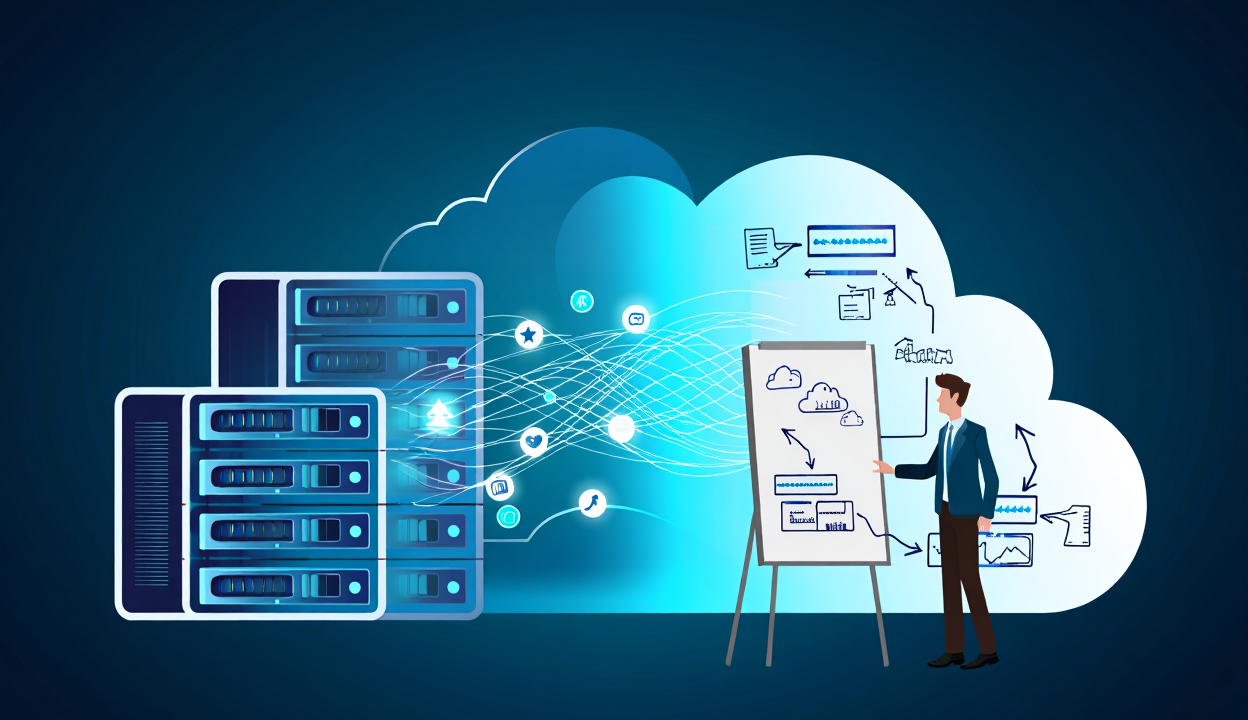What Does Cloud Migration Mean? Understanding the Journey with OpsNexa
In today’s digital age, businesses are constantly seeking ways to innovate, reduce costs, and improve agility. One of the most transformative steps companies take is cloud migration. But what does cloud migration mean, exactly? And why is it crucial for your business’s future?
At OpsNexa, we specialize in helping organizations navigate this complex but rewarding journey. This comprehensive guide explains what cloud migration is, why it matters, the different types of migration, the benefits and challenges, and how OpsNexa ensures your move to the cloud is smooth and successful.
🌥️ Defining Cloud Migration
Cloud migration is the process of moving digital assets — such as applications, data, workloads, and IT resources — from an on-premises data center or legacy infrastructure to a cloud computing environment.
The cloud environment can be:
-
Public cloud platforms like AWS, Microsoft Azure, or Google Cloud
-
Private clouds managed internally or by third-party providers
-
Hybrid clouds combining on-premises infrastructure with cloud resources
Migration can involve moving all or part of an IT portfolio to the cloud, depending on business goals and technical requirements.
🔍 Why Is Cloud Migration Important?
Businesses migrate to the cloud for many reasons, including:
-
Cost Efficiency: Reduce capital expenses on hardware and only pay for what you use.
-
Scalability: Instantly scale resources up or down based on demand.
-
Agility: Deploy new applications faster and innovate rapidly.
-
Security: Benefit from enterprise-grade security and compliance capabilities.
-
Business Continuity: Leverage cloud backup, disaster recovery, and redundancy.
-
Global Reach: Access global data centers to serve customers worldwide with low latency.
🛠️ What Does Cloud Migration Typically Involve?
Migrating to the cloud is not just “copy and paste.” It involves a series of strategic and technical steps such as:
-
Assessment and Planning: Understanding your existing IT environment, workloads, and business objectives to determine what and how to migrate.
-
Choosing a Migration Strategy: Deciding whether to lift-and-shift (rehost), refactor applications, repurchase SaaS alternatives, or use hybrid approaches.
-
Data Migration: Securely transferring databases, files, and storage to the cloud with minimal downtime.
-
Application Migration: Moving and testing applications in the new environment to ensure performance and functionality.
-
Validation and Optimization: Verifying workloads work correctly and tuning them for cost and performance in the cloud.
🌈 Types of Cloud Migration
Different organizations have different migration needs. The common types include:
1. Rehosting (Lift-and-Shift)
Moving applications to the cloud with minimal changes. Quickest method but may not use cloud features fully.
2. Replatforming
Making small optimizations to leverage cloud services better without major redesign.
3. Refactoring (Re-architecting)
Redesigning applications to be cloud-native for maximum benefit, like using microservices or serverless computing.
4. Repurchasing
Switching to cloud-based software or SaaS solutions instead of migrating existing apps.
5. Retiring
Decommissioning obsolete applications instead of migrating them.
6. Retaining
Keeping certain workloads on-premises when cloud migration is not feasible or necessary.
✅ Benefits of Cloud Migration
-
Improved Performance: Cloud infrastructure often outperforms legacy hardware.
-
Enhanced Security: Providers invest heavily in security, and you can implement best practices easily.
-
Cost Savings: Lower upfront costs, pay-as-you-go pricing, and reduced maintenance.
-
Flexibility: Access a wide range of services and technologies instantly.
-
Innovation: Accelerate development cycles and deploy new features faster.
⚠️ Challenges of Cloud Migration
Cloud migration is rewarding but not without challenges:
-
Data Security and Compliance: Ensuring sensitive data is protected and meets regulations.
-
Downtime Risks: Migrating critical workloads without disrupting business operations.
-
Complexity: Dealing with application dependencies and architecture mismatches.
-
Cost Overruns: Unplanned expenses due to improper planning or monitoring.
-
Skill Gaps: Lack of in-house cloud expertise can slow migration.
🌟 How OpsNexa Supports Your Cloud Migration Journey
At OpsNexa, we bring deep expertise and proven methodologies to address these challenges head-on. Here’s how we help:
1. Comprehensive Cloud Readiness Assessment
We analyze your existing IT landscape, workloads, and business goals to craft a migration roadmap tailored to you.
2. Customized Migration Strategy
Based on your unique needs, we recommend the right migration type—whether lift-and-shift, refactor, or hybrid—balancing speed and cloud benefits.
3. Secure, Efficient Execution
Using best-in-class tools and automation, we migrate your data and applications with minimal downtime and zero data loss.
4. Post-Migration Optimization
We monitor and optimize your cloud environment to control costs, boost performance, and maintain security.
5. Ongoing Managed Services
OpsNexa offers continuous cloud support, ensuring your environment stays updated, secure, and scalable.
📊 Case Study: Successful Cloud Migration with OpsNexa
A mid-sized retail company wanted to migrate their e-commerce platform and ERP system to the cloud to improve scalability during peak seasons.
OpsNexa Approach:
-
Performed a detailed cloud readiness assessment
-
Recommended a hybrid migration: rehosted ERP, refactored e-commerce for cloud-native scaling
-
Executed migration during off-hours to avoid downtime
-
Set up monitoring and auto-scaling on AWS
Result:
The retailer saw a 40% improvement in site speed, 30% cost savings, and handled 3x traffic during peak sales seamlessly.
🔑 Final Thoughts: What Does Cloud Migration Mean for Your Business?
Cloud migration is more than just moving IT assets—it’s a strategic shift that can redefine how your business operates, innovates, and competes.
Understanding what cloud migration means and partnering with experts like OpsNexa ensures you reap the benefits while mitigating risks.
📞 Ready to Start Your Cloud Migration Journey?
Contact OpsNexa today to discuss your cloud migration needs and get a personalized plan that aligns perfectly with your business goals.
You can also Contact OpsNexa for Devops architect and devops hiring solutions.



